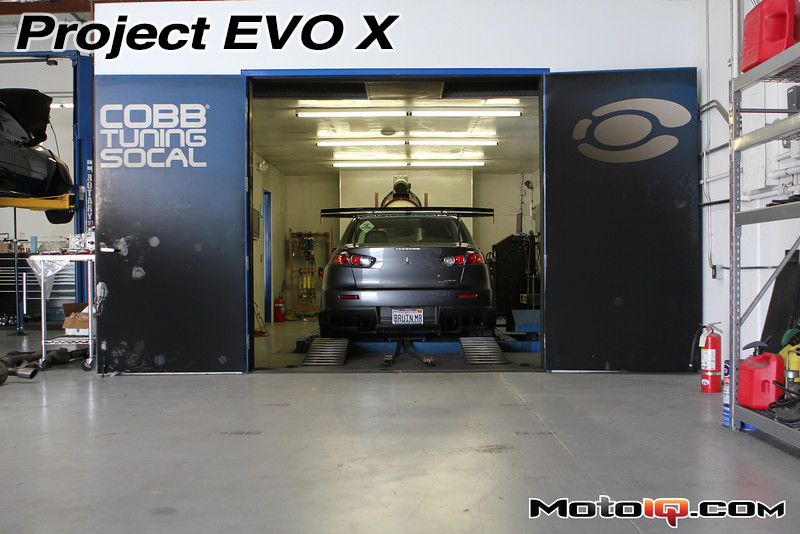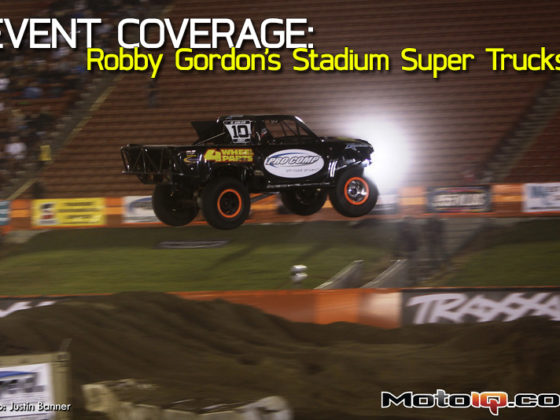,
 |
| After a two hour dyno session with Mitch, the MR was now completely tuned. One of the new features in the Cobb Tune allows for on-the-fly MAP switching. By pressing down the CRUISE button (cruise control on/off) for five seconds, you can initiate the alternate map. In my case, I had Mitch program me a High and Low-Boost setting. This ProTune map, along with a Fuel Economy and Valet map were loaded onto my AccessPort for safe keeping. The results of the tune were impressive: On High-Boost, the MR pulled 326 hp / 339 ft-lbs (@23.8 psi). On Low-Boost, the MR pulled 273 hp /272 ft-lbs (@17.3 psi). The Cobb ProTune featured a lot of changes. Now the check engine light warning icon will flash as an engine knock warning light, instead of non-important codes—these codes are still accessible and clearable via AccessPort. Also changed was faster throttle body response, elimination of the electronic speed limiter, and a raised rev limit. |
After the ProTune was completed, I was able to speak with Mitch McKee and ask him a few questions.
MotoIQ: Mitch, can you give the MotoIQ readers a quick bio about yourself and how you got into cars and tuning?
Mitch: I am from Colorado— born and raised there. I started working on cars when I was around 15 years old tinkering with DSM’s and All-Trac Celicas in friend’s garages. I did that in high school and then graduated and started to go to school for engineering. I was rarely attending and it just didn’t feel like a good fit at the time, so I moved to Arizona and started to learn about tuning. I tuned in Arizona for 6 years or so and then moved to Chicago to tune for AMS Performance in West Chicago. I learned a ton from Chris Black, Martin Musial and everyone else at AMS and have brought that experience to Cobb.
MotoIQ: What are your top three favorite cars to tune?
Mitch: My favorite 3 cars to tune would be Evo’s 8-10, GTR’s, and Porsche’s. I enjoy the platforms a lot and I just enjoy working with them.
MotoIQ: Other than cars, what’s something that you want MotoIQ readers to know about you that isn’t known elsewhere?
Mitch: I guess the thing that people probably don’t know about me is I am big into craft beer. If I wasn’t a calibrator I would probably do something with beer as I really enjoy the whole process and different styles.
MotoIQ: Continuing with that term “different styles” you’ve stated before on the Cobb Forums that “every tuner, tunes differently” with respect to comparing #s from one person to another. What is your philosophy on what makes a ‘great tune’?
Mitch: There really are a lot of different ways to tune cars. There isn’t one set way of tuning cars. I think some people tend to think that way, and a lot of times people will say that if cars aren’t tuned one specific way that the tune is “no good” or “incorrect”. But for the most part there is usually a couple different ways of tuning—like using more boost and less timing or vice versa, or running cars leaner with less boost and timing. Really just need to find what works for the specific car you are tuning and what the tuner prefers. Most platforms are similar in terms of performance, but every single car is always a little different. I think that is what makes tuning interesting every day is that cars really have personalities, just like their owners. It’s neat to figure out how things work even on the same type of cars with the same modifications they can vary in terms of the ECU calibration. Cars always tell you what they want and don’t want so it’s almost like you are talking with them. I am pretty conservative in how I tune. I don’t push cars real hard unless the owner really wants it. I find I like cars that have a good balance of good reliable power rather than trying to push for the extra 10 or 20 hp. Not to say it is a bad thing to push cars some tuners seem to like to tune that way and that is fine. Like I said there is always a different way to do things.
MotoIQ: During our conversation in the dyno session, you said that you have been working on the refinements on all the Evo X maps for the past 6 months. With a high-level description, can you say what areas within the engine management maps did you explore into versus what was originally done with the off-the-shelf maps, that make these refinements so much better?
Mitch: Well the refinements really came from the way that we changed how the load is calculated. The stock Evo X ECU uses two calculations to determine the final load, the MAF sensor calculations and the MAP sensor calculations. So it is part speed density and part MAF based. The problem is that the car is kind of finicky on which one it chooses and when. The other problem is a lot of Evo X’s with intakes have very jagged non-laminar readings, so if the load calculation decides to follow the MAF calculation’s it can cause the load to be very jagged which can make the car run very rough. This is an even bigger problem for the Evo X MR’s due to the fact that they use the load signal to tell the TCU to do things like shift up or down, and it has an effect on the clutch pressure applied. So if the load signal sent is very jagged then it can cause some adverse, undesirable effects when the transmission goes to shift. So what we have done here at Cobb is one of our engineers, David Liu, came up with a way to modify the way that the load calculations get averaged and it is controllable in the software. So we basically have a switching point more or less in terms of speed density and MAF based operation. Nice thing is it averages the two more or less and gives us a loggable parameter we call load reference calculation. So we know which calculation or mode is being used and then can make changes to the appropriate tables. It also makes the load reading very smooth regardless of a choppy MAF reading. So that is really one of the biggest changes we made to the software and off the shelf maps that makes the MR’s shift a bit smoother and just run a bit better. No crazy SST tricks were implemented as we wanted the car to behave just a little smoother than stock. It works well on the GSR as well since the load reading is much smoother.
MotoIQ: Since the vehicle is an MR, what special tuning aspects did you have to concentrate on versus what is typically done for a GSR?
Mitch: Really the MR and the GSR are pretty similar in terms of how they tune more or less. The MR has some tables inside of the ECU that directly relate and or affect the transmission controller (TCU). We modify some of the tables for the MR that relate to timing and fueling during shifting. This helps to make the shifts a bit less rough and just make for smoother operating vehicle. We have more transmission control inside of the software but for our normal off the shelf maps we really don’t need to mess with them a lot more as they can change some other characteristics of the transmission, and not for the better.
MotoIQ: The car after the ProTune, drives noticeably better in “D” normal mode. The shifts are noticeably quicker, more crisp. Did you alter the shift points?
Mitch: Shift schedules for the car are in the TCU and we do not modify them. The transmission control logic is a lot more complicated, and not quite as straight forward as the ECU is. The better feel of driving is due to the way that we have set up the load control coupled with the tuning changes made to the MR.
MotoIQ: If you didn’t alter the shift points, since they are in the TCU, then the load calculation averaging will work for the Sport and Super-Sport modes, correct?
Mitch: Yes the change works in any mode, it is not specific to one.
MotoIQ: What are the power limits are on the MR as far as getting the most power on the platform with the limitations on the transmission. Is there a torque number limit you try to keep the car’s transmission under for safety and longevity purposes?
Mitch: Well the limits are probably around 400ft/lbs or so. Most tuners tend to keep stock block Evo X’s to no more than 400ft/lbs anyways since the rods past that have a tendency to come out of hiding inside of the block and say “hello”.
MotoIQ: is there a higher speed limiter with the tune?
Mitch: No the stock speed limiter is 315MPH or something like that—haha!
MotoIQ: is the redline RPM rev limiter higher with the tune?
Mitch: No it’s stock. Stock cars are not making power that high so we leave them.
MotoIQ: Is the throttle body control altered to be more responsive, or more open toward higher RPM?
Mitch: Not really. You can change it to be more responsive but we generally leave it as the stock throttle feel is pretty linear and works well. The nice thing is with our software you can change it if you would like.
MotoIQ: Would you recommend a higher blend of octane (91 + 100 race gas) for the levels of boost/load that would be seen under heavy acceleration (i.e., on the track at the road course)? Is a rev limiter bounce OK?
Mitch: It is always a good idea to mix some race gas when on track. Our California gas is really bad so it is nice to give yourself that buffer when the temperature starts to increase. I highly recommend it for sure.
MotoIQ: Any other words of advice with respect to the new tune? Perhaps future modifications, like swapping out exhausts or new intercooler pieces?
Mitch: Anytime that you change anything that has a direct effect on airflow, I always recommend you at least send some logs to make sure the car is running correctly. Usually when you change to a cat back or test pipe you will be fine, but sometimes boost can increase if there was a lot of back pressure with the stock components. When changing parts it is just a good idea to get some logs to your tuner just to be safe.
MotoIQ: Thanks Mitch for taking the time to answer some of our tech questions.
Having waited over a year to get the parts installed, the tune and experience at Cobb Socal made the wait totally worthwhile. The MR seems like a totally new car and is as exciting again as when I first took delivery. The tune really opened up the potential of the 4B11 and now I’m contemplating if I just want to stay with “simple bolt-ons.” One thing is for sure, the first work day after the tune, I took my daughter to daycare and she told me “Go Faster Daddy!”… that’s all I needed to hear.
In our next Project X MR article, we’ll go over my aspirations for aero dominance: air is free, let’s use it to our advantage!
Read More About Project EVO X Here!
Sources
Global Performance Parts (US distributor for Whiteline)



